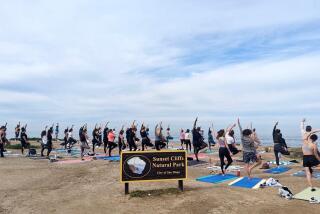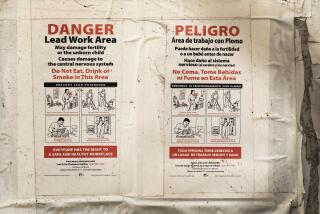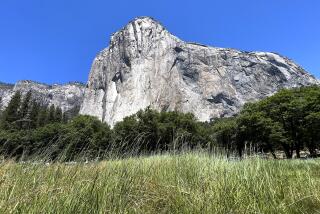State Regulators Get Into the Act on Bungee Jumping
SACRAMENTO — Spurred by the fatal plunge last month of a California bungee jumper, state safety engineers who normally inspect elevators and carnival rides Wednesday went into the business of regulating the swiftly expanding bungee-jumping industry.
“We are concerned about some of the fly-by-night operations that might be developing,” said John Duncan, a spokesman for the state Division of Occupational Safety and Health Administration.
The intervention of government into a virtually unregulated sports activity was welcomed by Tom Woodward, president of the North American Bungee Assn., which he said represents 42 of the nearly 100 commercial operators throughout the country.
“There is a perception that there are rapid profits available in bungee jumping right now,” Woodward said. “We don’t want inexperienced, untrained or unqualified people getting into the business. The states can help us by regulating a sport we cannot regulate ourselves because we don’t have the people.”
In the first fatal bungee jump reported in the United States, an instructor, Hal Irish, 29, of La Mirada, was killed Oct. 27 near Perris when his cord became unhooked during a jump from a hot-air balloon and he fell to the ground. The increasingly popular adventure activity has claimed lives in other countries.
In bungee jumping, a tethered thrill-seeker pitches into space and free falls until the elastic cords take hold and break the plunge. Woodward estimated that new commercial firms are blooming at the rate of two a day throughout the country.
Other states have taken legislative or administrative steps to regulate bungee jumping, Woodward noted. But the death of Irish hastened action by California industrial safety regulators, who had been trying to fashion a regulatory scheme since last summer.
“It did bring attention to it,” Duncan said.
The new regulations were formally adopted on Monday. Duncan said at least two permits have been issued and several other operators are in line.
Both Duncan and Woodward estimated there are about 40 commercial bungee-jump firms in California, operating from hot-air balloons, cranes, platforms and special towers. Jumping from bridges, buildings and other public structures long has been against the law.
Officials of Cal/OSHA, who already inspect cranes, determined that existing provisions of the state labor code that govern carnival and other “portable” amusement rides also apply to bungee-jump operators.
Safety engineers who inspect and issue permits for carnival rides and elevators will perform similar duties for bungee jumping, including inspecting harnesses, cords and fasteners. Operators will be charged $96 an hour for inspections before they are awarded an operating permit that is valid for one year.
One inspector said he and his colleagues have received no special training for bungee-jump equipment inspections. “If the manufacturer’s data says something is capable of supporting two tons, you know it is capable of supporting a 200-pound person,” he said.
More to Read
Sign up for Essential California
The most important California stories and recommendations in your inbox every morning.
You may occasionally receive promotional content from the Los Angeles Times.










